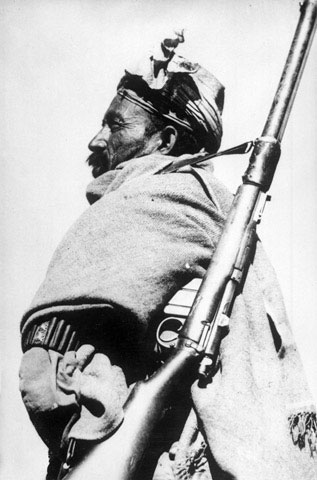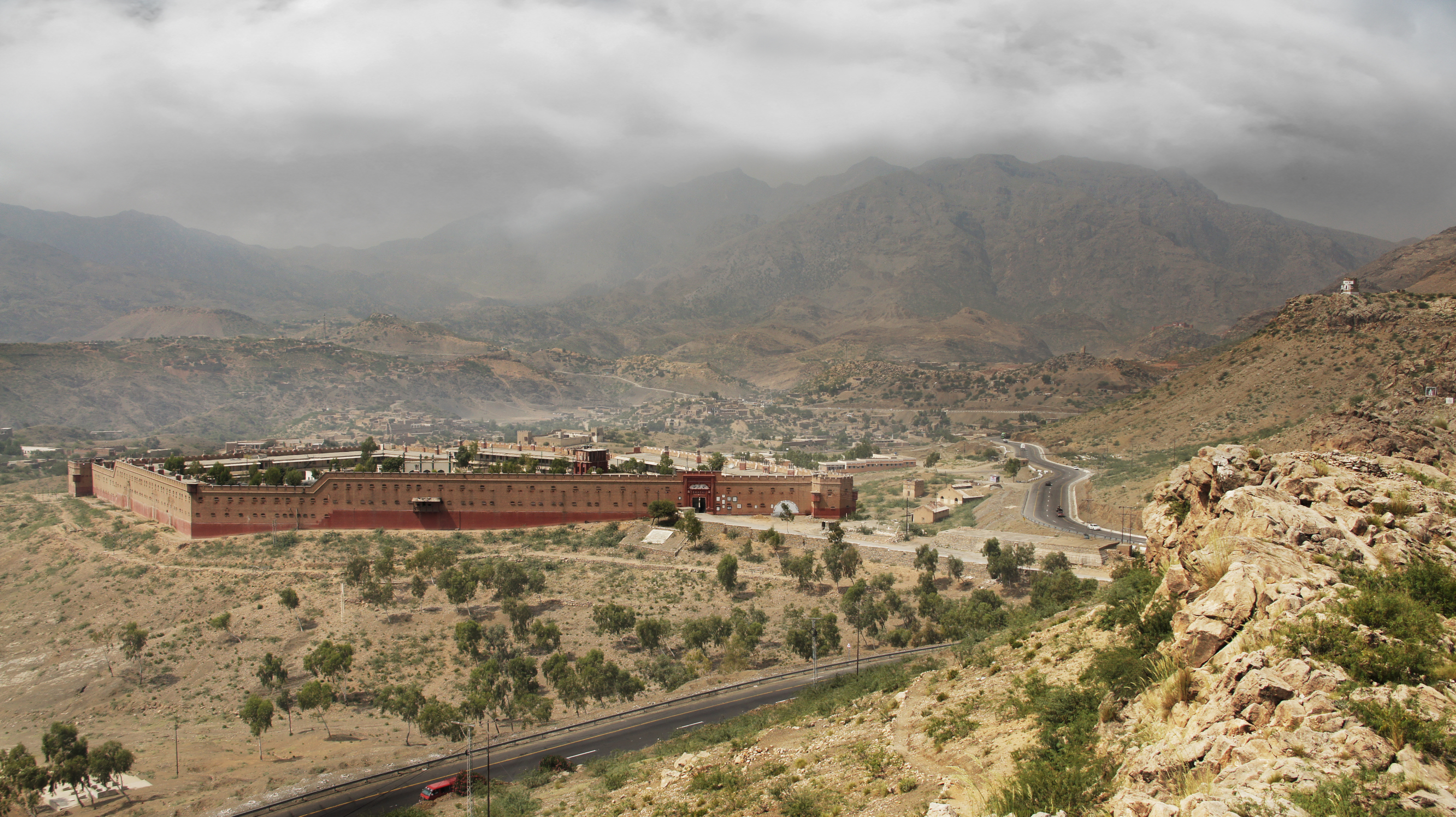Khyber Rifles on:
[Wikipedia]
[Google]
[Amazon]
The Khyber Rifles are a paramilitary regiment, forming part of the
 During the period of
During the period of 

 In August 1947, upon partition, the Khyber Rifles and the other Frontier Corps regiments were transferred to Pakistan. In addition to its traditional policing duties in the tribal areas of the Khyber region, the Khyber Rifles provided detachments to serve in Kashmir and
In August 1947, upon partition, the Khyber Rifles and the other Frontier Corps regiments were transferred to Pakistan. In addition to its traditional policing duties in the tribal areas of the Khyber region, the Khyber Rifles provided detachments to serve in Kashmir and
Journey to Khyber Rifles: Commandant's Diary 2005-2008
{{Frontier Corps * Military units and formations of British India Regiments of the Frontier Corps
Pakistan
Pakistan ( ur, ), officially the Islamic Republic of Pakistan ( ur, , label=none), is a country in South Asia. It is the world's fifth-most populous country, with a population of almost 243 million people, and has the world's second-lar ...
i Frontier Corps Khyber Pakhtunkhwa (North)
The Frontier Corps Khyber Pakhtunkhwa (North) ( ur, , reporting name: FCKP(N)), is a group of paramilitary regiments of Pakistan, operating in the northern part of Khyber Pakhtunkhwa province, overseeing the country's borders with Afghanistan ...
. The Rifles are tasked with defending the border with Afghanistan
Afghanistan, officially the Islamic Emirate of Afghanistan,; prs, امارت اسلامی افغانستان is a landlocked country located at the crossroads of Central Asia and South Asia. Referred to as the Heart of Asia, it is bordere ...
and assisting with law enforcement in the districts adjacent to the border. Raised in the late nineteenth century, the regiment provided the title and setting for the widely read novel, '' King of the Khyber Rifles'', and is the oldest regiment of the Corps. The regiment has a 2020/21 budget of and is composed of seven battalion-sized wings.
History
 During the period of
During the period of British rule
The British Raj (; from Hindi ''rāj'': kingdom, realm, state, or empire) was the rule of the British Crown on the Indian subcontinent;
*
* it is also called Crown rule in India,
*
*
*
*
or Direct rule in India,
* Quote: "Mill, who was hims ...
, the Khyber Rifles was one of eight "Frontier Corps" or paramilitary units recruited from the tribesmen of the North West Frontier, serving as auxiliaries for the regular British Indian Army. Raised in the early 1880s as the Khyber Jezailchis; (a jezail
The jezail or ''jezzail'' ( ps, جزائل, ultimately from the plural form ar, جزایل, "long arrels) is a simple, cost-efficient and often handmade long arm commonly used in South Asia and parts of the Middle East in the past. It was popula ...
being a type of home made musket), the Khyber Rifles recruited from Afridi
The Afrīdī ( ps, اپريدی ''Aprīdai'', plur. ''Aprīdī''; ur, آفریدی) are a Pashtun tribe present in Pakistan, with substantial numbers in Afghanistan. The Afridis are most dominant in Pakistan's Federally Administered Tribal ...
tribesmen, with British commanders seconded from regular British Indian army regiments. Subordinate officers were Afridis. The first commandant was Sir Robert Warburton, son of an Anglo-Irish soldier Robert Warburton of the Bengal Artillery and his wife Shah Jehan Begum, an Afghan
Afghan may refer to:
*Something of or related to Afghanistan, a country in Southern-Central Asia
*Afghans, people or citizens of Afghanistan, typically of any ethnicity
** Afghan (ethnonym), the historic term applied strictly to people of the Pas ...
princess. Sir Robert remained the commandant until his retirement in 1899. His deputy, Colonel Sir Aslam Khan Sadozai, the first Muslim commandant, succeeded him. Then, the deputy to Colonel Sir Aslam Khan Sadozai was Malik Afridi Khan of Mulazai. Although the deputy, Malik Afridi Khan spent most of his time as the acting in charge of the Khyber Rifles due to the extensive leave of Sir Aslam.
19th Century campaigns
The regiment saw active service in the Black Mountain expeditions of 1888 and 1891, during a period when the Khyber Pass itself remained peaceful. In August 1897 however, the Khyber Afridi tribes rose and the three forts garrisoned by the Khyber Rifles were overrun, the survivors falling back toJamrud
Jamrūd (Pashto/ ur, جمرود) or Jam ( ps, جم) is a town in the Khyber District of Khyber Pakhtunkhwa, Pakistan. Located in the Valley of Peshawar, on the western fringe of Peshawar city, Jamrud is the doorway to the Khyber Pass which is jus ...
. It took four months and forty-four thousand troops for the British to retake the Khyber Pass. The Khyber Rifles were reconstituted and resumed their garrisons at Landi Kotal
Lanḍī Kōtal ( ps, لنډي کوتل, ur, ) or Lwargai ( ps, لواړګی ''Lwāṛgai'') is a town in the Khyber Pakhtunkhwa province of Pakistan, and the administrative capital of Khyber District. It was one of the largest towns in the form ...
, Fort Maude
A fortification is a military construction or building designed for the defense of territories in warfare, and is also used to establish rule in a region during peacetime. The term is derived from Latin ''fortis'' ("strong") and ''facere'' ...
and Ali Masjid
Ali Masjid (Pashto and ) is the narrowest point of the Khyber Pass. It is located in Khyber District of Khyber Pakhtunkhwa, Pakistan. It is around east of the city of Landi Kotal (West of Peshawar) and has an elevation of . The width of the Kh ...
.

Disbandment and re-establishment
During theThird Anglo-Afghan War
The Third Anglo-Afghan War; fa, جنگ سوم افغان-انگلیس), also known as the Third Afghan War, the British-Afghan War of 1919, or in Afghanistan as the War of Independence, began on 6 May 1919 when the Emirate of Afghanistan inv ...
(1919), the loyalty of the Khyber Rifles was put under heavy strain and there were a number of desertions. The regiment was therefore disbanded as unreliable. Of the serving personnel 1,180 opted to be discharged, while smaller numbers transferred to a military police battalion or were formed into a newly raised Khyber Levy Corps.
The Khyber Rifles was however reconstituted from Afridi
The Afrīdī ( ps, اپريدی ''Aprīdai'', plur. ''Aprīdī''; ur, آفریدی) are a Pashtun tribe present in Pakistan, with substantial numbers in Afghanistan. The Afridis are most dominant in Pakistan's Federally Administered Tribal ...
veterans of World War II
World War II or the Second World War, often abbreviated as WWII or WW2, was a world war that lasted from 1939 to 1945. It involved the vast majority of the world's countries—including all of the great powers—forming two opposing ...
in 1946, with its headquarters at Landi Kotal. The commander of the reborn regiment was himself an Afridi, Sharif Khan.
 In August 1947, upon partition, the Khyber Rifles and the other Frontier Corps regiments were transferred to Pakistan. In addition to its traditional policing duties in the tribal areas of the Khyber region, the Khyber Rifles provided detachments to serve in Kashmir and
In August 1947, upon partition, the Khyber Rifles and the other Frontier Corps regiments were transferred to Pakistan. In addition to its traditional policing duties in the tribal areas of the Khyber region, the Khyber Rifles provided detachments to serve in Kashmir and East Pakistan
East Pakistan was a Pakistani province established in 1955 by the One Unit Policy, renaming the province as such from East Bengal, which, in modern times, is split between India and Bangladesh. Its land borders were with India and Myanmar, wi ...
. The regiment is currently involved in tracking down fugitives and terrorists.
Locations
The headquarters of the Khyber Rifles were atLandi Kotal
Lanḍī Kōtal ( ps, لنډي کوتل, ur, ) or Lwargai ( ps, لواړګی ''Lwāṛgai'') is a town in the Khyber Pakhtunkhwa province of Pakistan, and the administrative capital of Khyber District. It was one of the largest towns in the form ...
. Its prime role was to guard the Khyber Pass. The three main garrisons of the regiment were Landi Kotal, at the western end of the Pass, Fort Maude
A fortification is a military construction or building designed for the defense of territories in warfare, and is also used to establish rule in a region during peacetime. The term is derived from Latin ''fortis'' ("strong") and ''facere'' ...
to the east, and Ali Masjid
Ali Masjid (Pashto and ) is the narrowest point of the Khyber Pass. It is located in Khyber District of Khyber Pakhtunkhwa, Pakistan. It is around east of the city of Landi Kotal (West of Peshawar) and has an elevation of . The width of the Kh ...
in the centre.
Insignia and uniform
The badge of the Corps comprised two crossed Afghan daggers with the words KHYBER above and RIFLES below. While the Indian Army as a whole was noted for its colourful and elaborate dress uniforms prior to 1914, the various units of the Frontier Corps wore only plainkhaki drill
Khaki drill (KD) is the British military term for a type of fabric and the military uniforms made from them.
History
Khaki colour uniforms were first introduced in 1848 in the British Indian Army Corps of Guides. As well as the Corps of Gui ...
uniforms and turban
A turban (from Persian دولبند, ''dulband''; via Middle French ''turbant'') is a type of headwear based on cloth winding. Featuring many variations, it is worn as customary headwear by people of various cultures. Communities with promin ...
s.
Units
* Headquarters Wing * 101 Wing * 102 Wing * 103 Wing * 104 Wing * 105 Wing * 106 Wing * 107 Wing * Field BatterySee also
* King of the Khyber Rifles (1919 novel) * Shagai Fort *Civil Armed Forces
The Civil Armed Forces (CAF) are a group of nine paramilitary, uniformed organisations, separate and distinct from the regular "military" Pakistan Armed Forces. They are responsible for maintaining internal security, helping law enforcement ag ...
* Law enforcement in Pakistan
Law enforcement in Pakistan ( ur, ) is one of the three main components of the criminal justice system of Pakistan, alongside the judiciary and the prisons.
The country has a mix of federal, provincial and territorial police forces with both gen ...
References
Further reading
* Chevenix, Charles. "Frontier Scouts". Cape, London 1985External links
Journey to Khyber Rifles: Commandant's Diary 2005-2008
{{Frontier Corps * Military units and formations of British India Regiments of the Frontier Corps